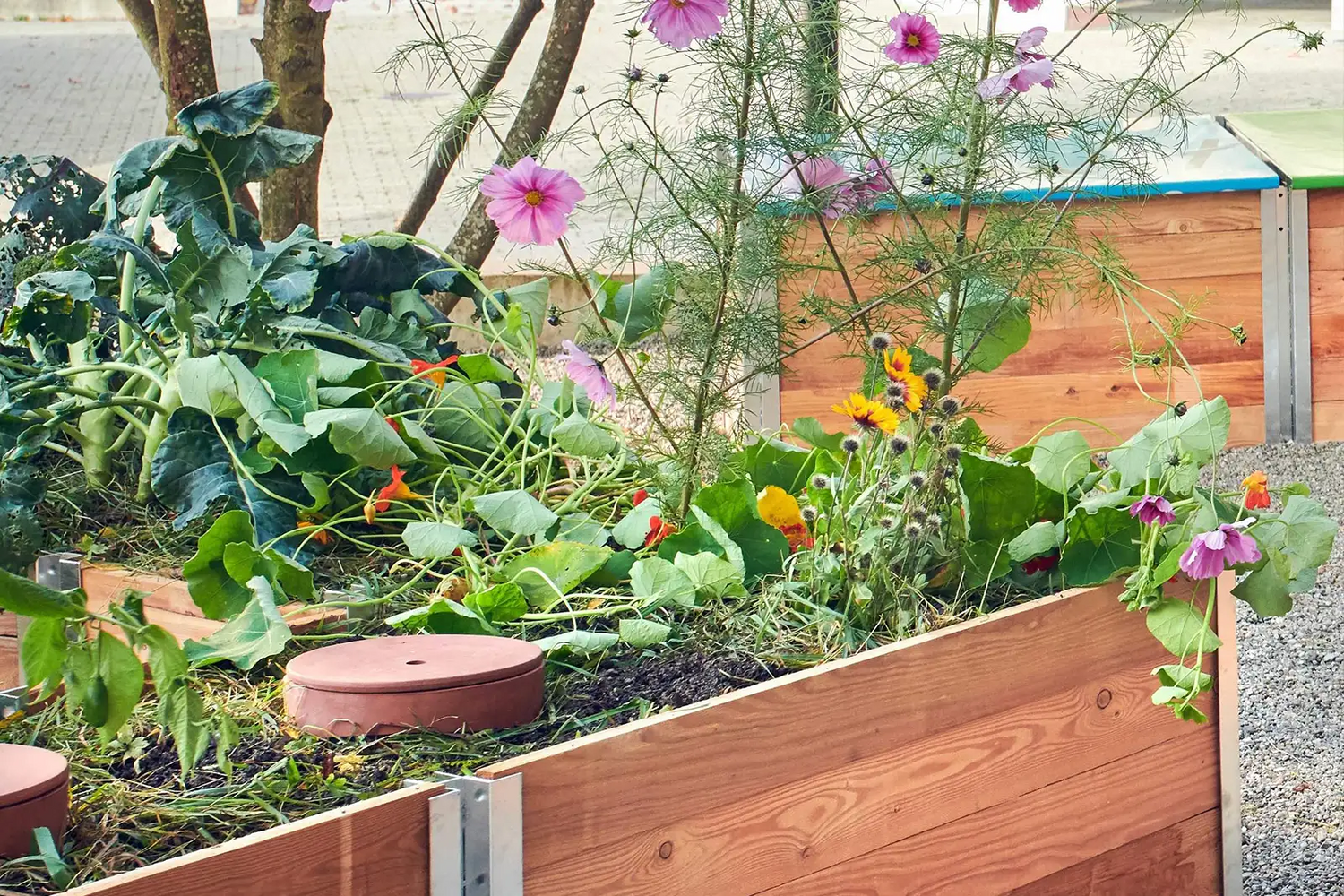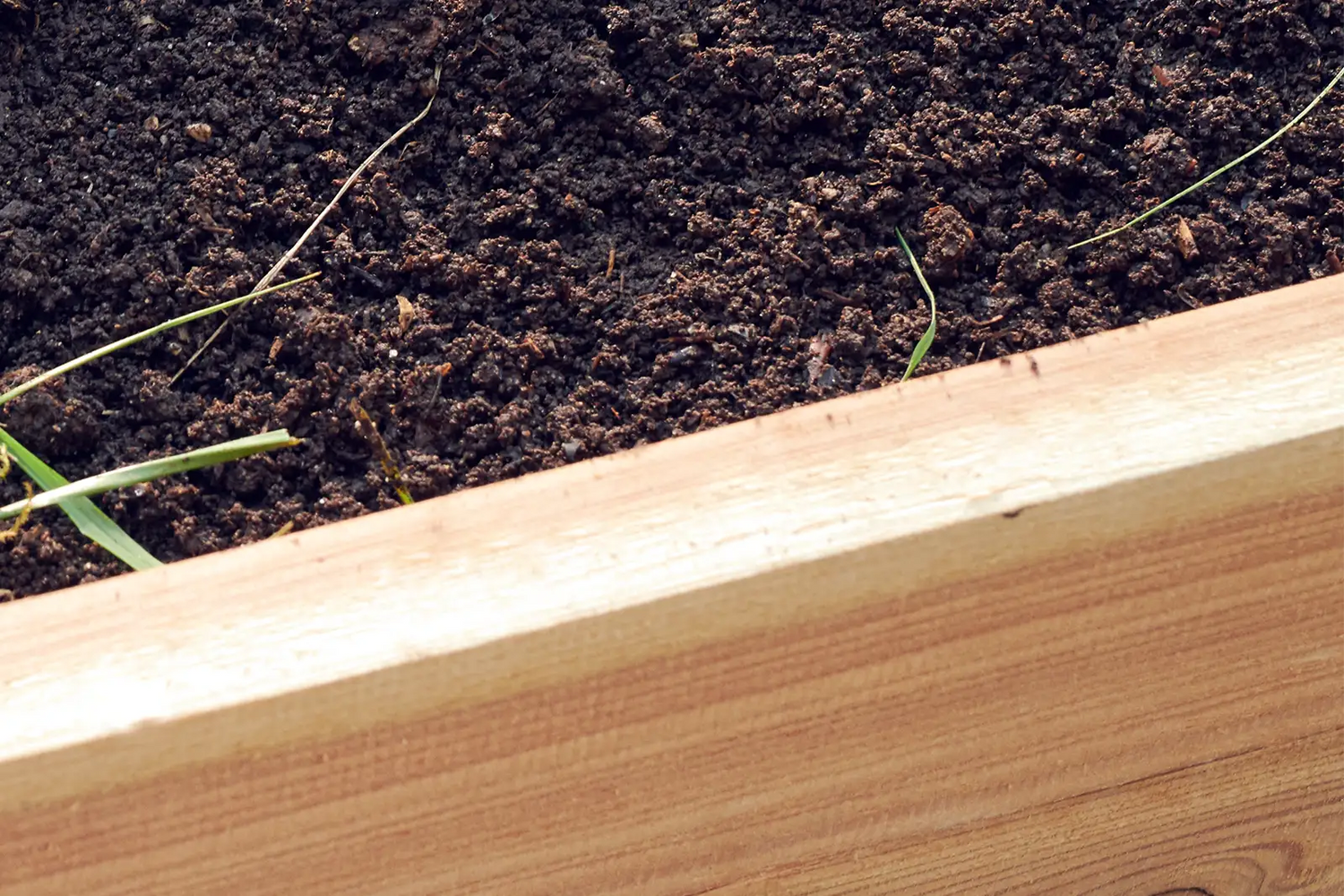Filling raised beds correctly
The filling of the raised bed is crucial for healthy plant growth and rich harvests. Nutrients are mainly absorbed in the top layer of humus, while deeper layers are mainly used to supply water. A drainage layer at the bottom, consisting of pebbles, stones or similar, is important to prevent waterlogging. Organic materials such as wood chippings or twigs can be disadvantageous as they can collapse, attract pests and pose a risk of rotting. The top 30 cm of the raised bed should be filled with high-quality compost and substrate to ensure an optimum supply of nutrients. Our raised bed filling includes two organic substrates from Ökohum: the peat-free, structurally stable "Roof and Trough Soil" for drainage and the "Naschgarten" soil for a sufficient supply of nutrients throughout the season.



